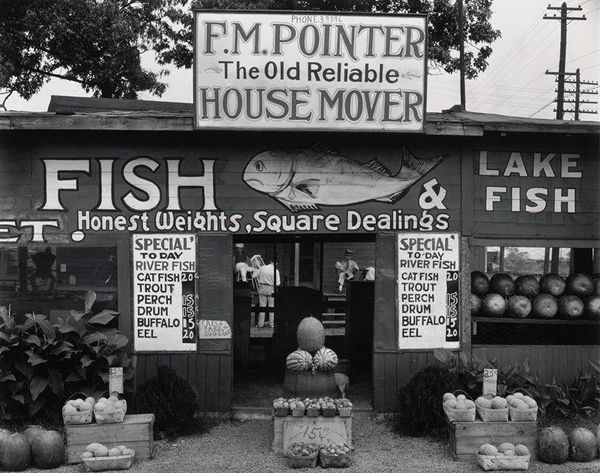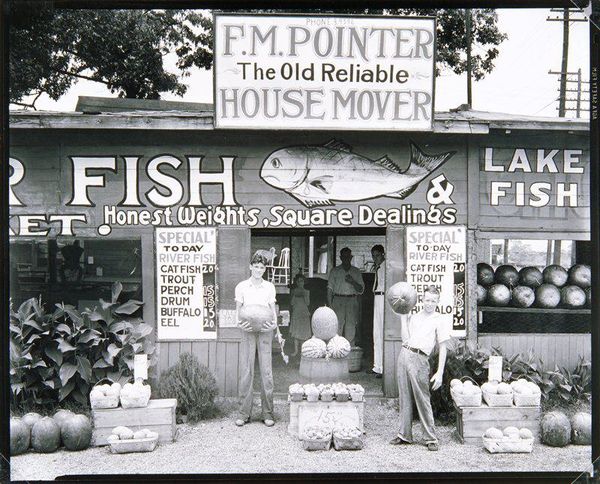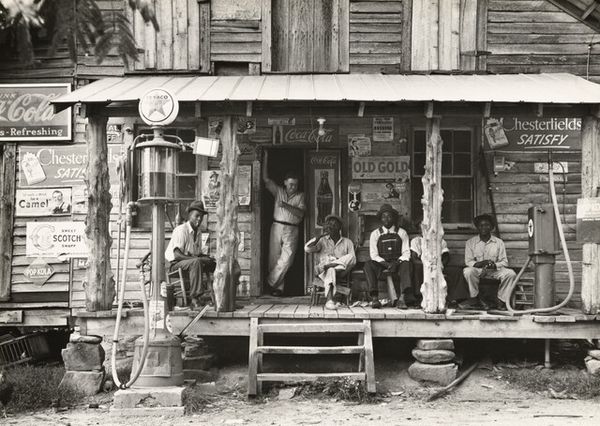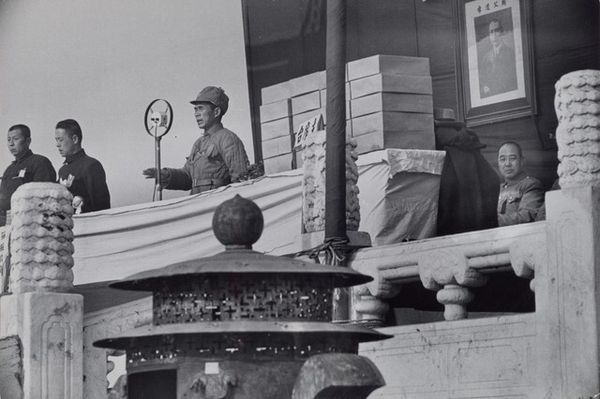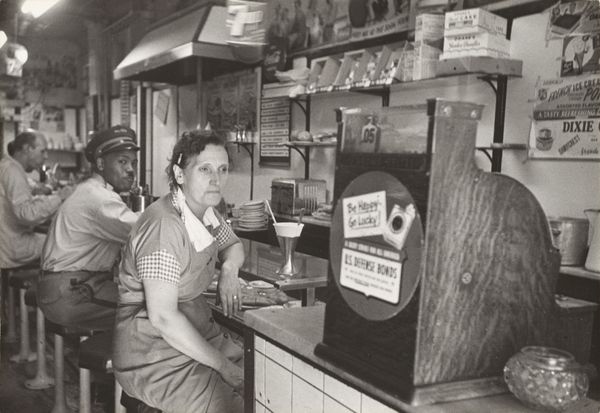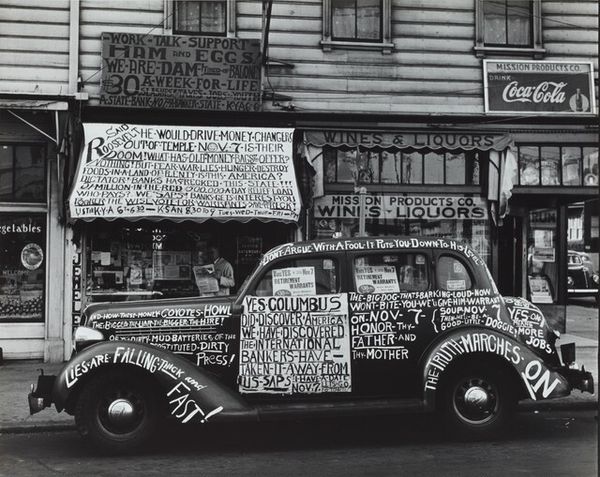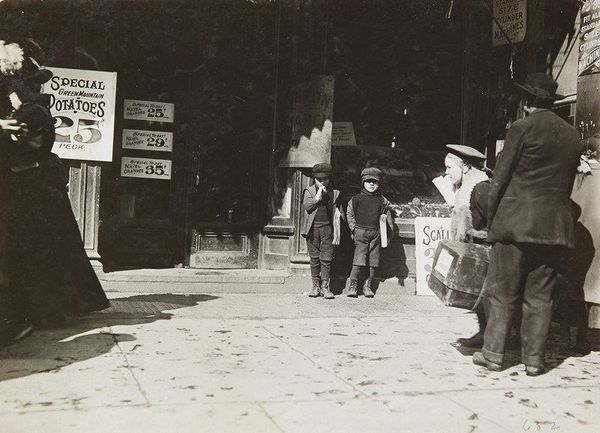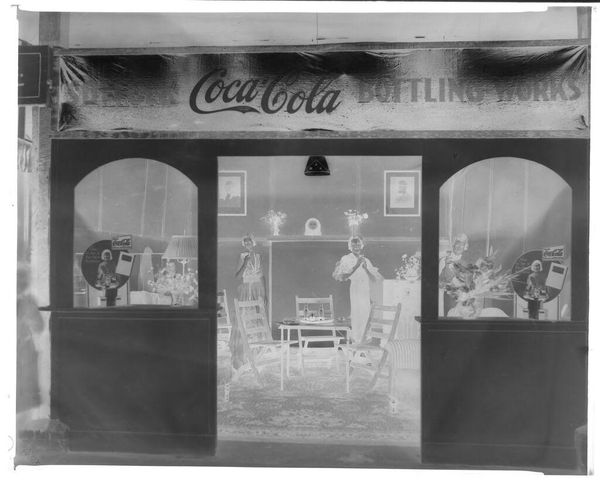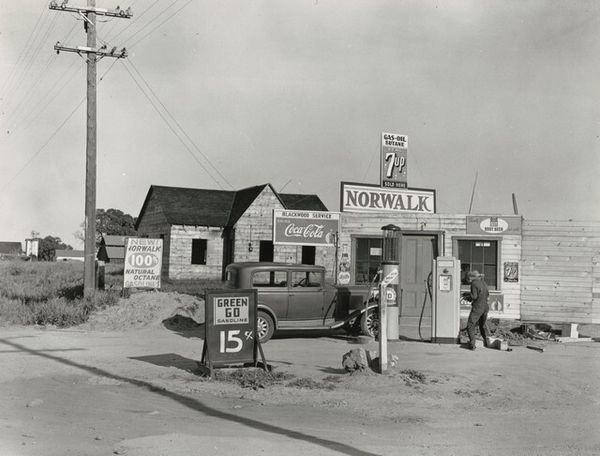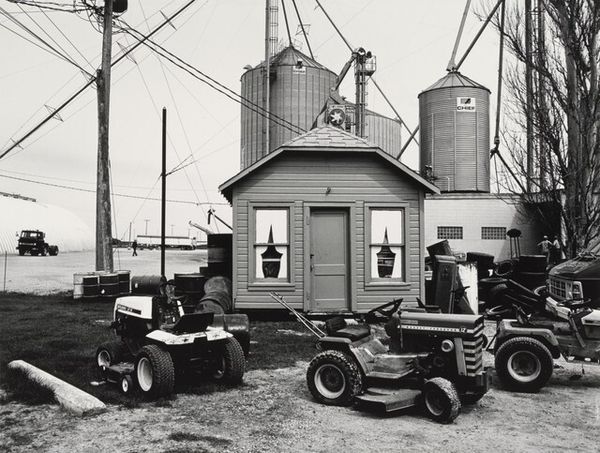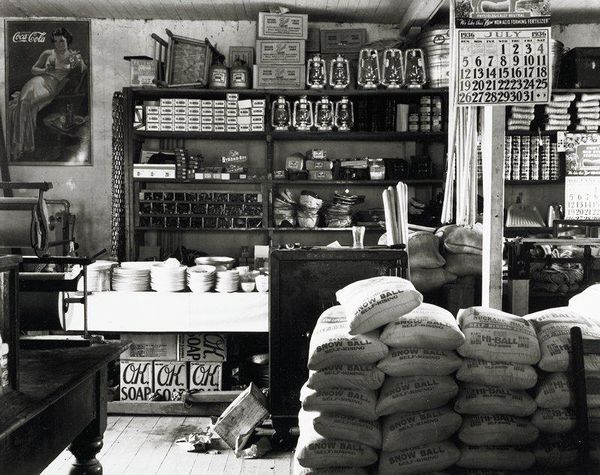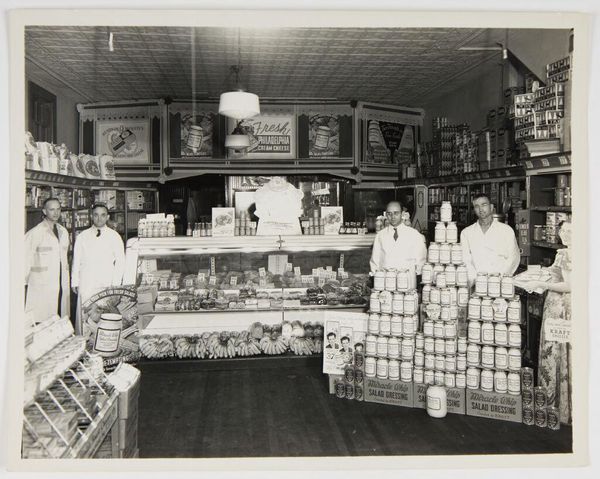
gelatin-silver-print, photography, gelatin-silver-print
#
gelatin-silver-print
#
landscape
#
street-photography
#
photography
#
gelatin-silver-print
#
street photography
#
realism
Dimensions: 7 9/16 x 9 9/16 in. (19.21 x 24.29 cm) (image)10 13/16 x 13 3/4 in. (27.46 x 34.93 cm) (sheet)
Copyright: No Copyright - United States
Curator: Walker Evans' "Roadside Stand," a gelatin silver print dating from 1936-1981, is an intriguing composition. What's your immediate reaction to it? Editor: It feels dusty, doesn't it? Like stepping back into a sweltering summer afternoon long gone. There's a quiet dignity mixed with the sheer grit of trying to make a living. You can almost smell the river fish and the overripe fruit. Curator: Note how Evans has structured the scene with an almost geometrical precision. The signs, the produce displays, even the figures are carefully placed, creating a layered effect. The contrast between light and shadow reinforces this organization. Editor: Totally, but the geometry never feels forced. The "Old Reliable House Mover" sign perched above the fish and produce gives the image a sense of incongruity. Almost like life throwing you a curve ball, but you’re still trying to keep your balance. Those boys holding the watermelons like trophies really capture that feeling. Curator: Semiotically, we can decode the signs as indicators of a rural American aesthetic and ethos. The promise of "Honest Weights, Square Dealings," reveals more than simply commerce. Editor: Yeah, there's this beautiful naivety. The contrast with what we now know about mass consumerism, like walking into a modern mega-mart... it's devastating. But Evans isn’t romanticizing. It's honest, like the shop claims to be! Curator: The limited tonal range of the gelatin silver print also contributes to a flattening of space. Editor: To me that almost adds to its charm—less information gives you the space to imagine a deeper story. Makes me wonder who the subjects in the shot are and what the larger story is about the people selling the fish. Curator: Absolutely, it allows us, perhaps forces us to consider it. The photograph stands as both a historical document and a subtle, nuanced commentary on the American landscape. Editor: Exactly! It reminds me that behind every artifact and object there's someone putting their life on the line and trying their very best.
Comments
Join the conversation
Join millions of artists and users on Artera today and experience the ultimate creative platform.
